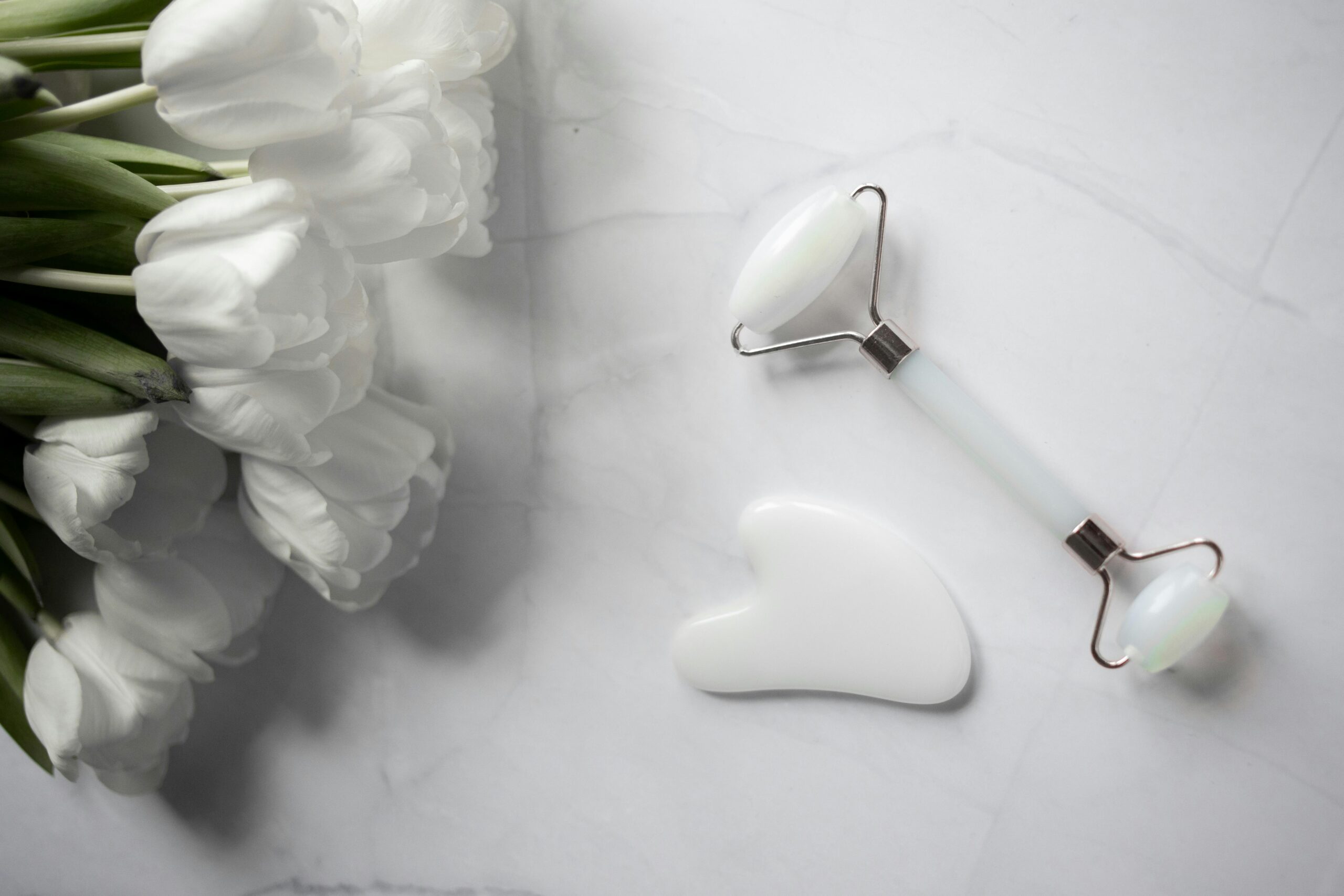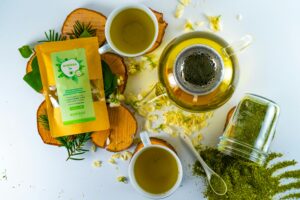Lymphatic drainage and types of related products play a crucial role in maintaining our overall health. This blog post delves into the benefits of lymphatic drainage and explores various (simple) products that can help you achieve optimal lymphatic health. Discover how improving your lymphatic system can enhance your immune function, reduce swelling, aid detoxification, and promote radiant skin.
Table of Contents
Lymphatic Techniques: Enhancing Your Health Naturally
Lymphatic techniques play a crucial role in maintaining a healthy lymphatic system. These methods help stimulate lymph flow, remove toxins, and support overall well-being. We will explore various lymphatic techniques, their benefits, and how to incorporate them into your daily routine.
What is the Lymphatic System?
The lymphatic system functions through a combination of physiological and biological processes that involve fluid dynamics, cellular activity, and molecular signaling. Here’s a closer look at the science behind it:
Fluid Dynamics
The lymphatic system helps maintain fluid balance by collecting excess interstitial fluid from the body’s tissues and returning it to the bloodstream. This process is crucial for preventing edema which is swelling caused by fluid accumulation. Lymphatic vessels; are similar to veins and have valves that ensure lymph flows in one direction toward the heart. The movement of lymph is facilitated by the contraction of surrounding muscles, breathing movements, and the intrinsic contractility of the lymphatic vessel walls.
Immune Surveillance and Response
Lymph nodes are strategically located throughout the body and serve as filtration points where lymph is screened for pathogens and foreign particles. Inside lymph nodes, specialized cells called dendritic cells and macrophages capture and present antigens (molecules that trigger an immune response) to lymphocytes. This interaction activates T-lymphocytes and B lymphocytes, of a nature that is essential for adaptive immunity. T cells attack infected or cancerous cells, while B cells produce antibodies that neutralize pathogens.
Cellular and Molecular Mechanisms
- Lymphocyte Activation: When pathogens are detected; dendritic cells present antigens to T cells in the lymph nodes, initiating an immune response. Activated T cells proliferate and differentiate into various subtypes, such as helper T cells, which assist other immune cells, and cytotoxic T cells, which kill infected cells.
- Antibody Production: B cells upon activation by antigens and helper T cells, differentiate into plasma cells that produce antibodies. These antibodies circulate in the bloodstream, binding to specific antigens on pathogens, marking them for destruction by other immune cells.
- Cytokine Signaling: Immune responses are regulated by cytokines signaling molecules that mediate communication between cells. Cytokines can promote inflammation, recruit immune cells to infection sites, and modulate the activity of lymphocytes.
Lipid Absorption
The lymphatic system also plays a role in the absorption of dietary fats from the intestine. Specialized lymphatic vessels called lacteals, (located in the lining of the small intestine), absorb digested fats and transport them as chyle (a milky fluid) to the bloodstream. This process involves the formation of lipoproteins, complexes of lipids and proteins that facilitate the transport of fats in the aqueous environment of the lymph and blood.
Homeostasis and Waste Removal
Lymphatic vessels also collect and transport cellular waste products, debris, and excess proteins from tissues. This helps maintain tissue homeostasis and prevents the accumulation of potentially harmful substances.
Research and Clinical Implications
Understanding the lymphatic system has significant implications for treating diseases like lymphedema, autoimmune disorders, and cancer. Research into lymphatic function and dysfunction continues to reveal insights into how this system supports health and how it can be targeted therapeutically. For instance, lymphatic mapping and sentinel lymph node biopsies are critical in cancer staging and treatment planning.
Overall, the lymphatic system’s complex interplay of fluid dynamics, immune surveillance, and cellular activity underscores its importance in maintaining health and defending against disease.
Why are Lymphatic Techniques so Important?
Lymphatic techniques, often used in manual therapy and medical treatments, are essential for several reasons related to health maintenance, disease prevention, and recovery from illness or surgery.
Promoting Lymphatic Drainage
Lymphatic techniques, such as manual lymphatic drainage (MLD), help stimulate the movement of lymph through the lymphatic vessels. This can be particularly beneficial for individuals with conditions that impair lymph flow, such as lymphedema. By promoting lymphatic drainage, these techniques help reduce swelling and prevent the buildup of lymph fluid in tissues.
Enhancing Immune Function
The lymphatic plays a crucial role in the body’s immune response by transporting white blood cells and filtering out pathogens. Lymphatic techniques can enhance immune function by ensuring that lymph flows freely and efficiently, allowing immune cells to reach sites of infection or injury more effectively.
Reducing Swelling and Inflammation
Injuries, surgeries, and certain medical conditions can lead to localized swelling and inflammation. Lymphatic techniques help reduce these symptoms by promoting the removal of excess fluid and inflammatory substances from affected areas. This can lead to faster healing and reduced pain.
Detoxification
The system; is responsible for removing waste products, toxins, and cellular debris from the body. These techniques support this detoxification process by enhancing the flow of the lymphatic system, and ensuring that these waste materials are efficiently transported to the lymph nodes for filtration and eventual elimination from the body.
Improving Circulation
Good lymphatic function is closely linked to overall circulation. By promoting lymph flow, lymphatic techniques can improve blood circulation, which becomes essential for delivering oxygen and nutrients to tissues and removing metabolic waste products.
Managing Chronic Conditions
Chronic conditions such as fibromyalgia, chronic fatigue syndrome, and rheumatoid arthritis can benefit from lymphatic techniques. These techniques can help manage symptoms by reducing and alleviating pain and improving overall tissue health.
Stress Reduction
Lymphatic techniques, particularly manual lymphatic drainage, have a calming effect on the nervous system. They help reduce stress and promote relaxation which is beneficial for overall health and well-being.
Preventing Health Complications
Common use of lymphatic techniques can help prevent severe health complications associated with poor lymph function, such as chronic swelling, infections, and tissue damage. By maintaining healthy lymphatic flow, these techniques support overall health and help prevent the onset of lymphatic-related conditions.
In summary, lymphatic techniques are important because they support the lymphatic system’s vital functions in fluid balance, immune response, detoxification, and overall health maintenance. These techniques can enhance recovery, reduce symptoms of chronic conditions, and promote general well-being.
Techniques
Gua Sha
Gua sha is an ancient Chinese healing technique that involves scraping the skin with a smooth-edged tool to improve circulation.
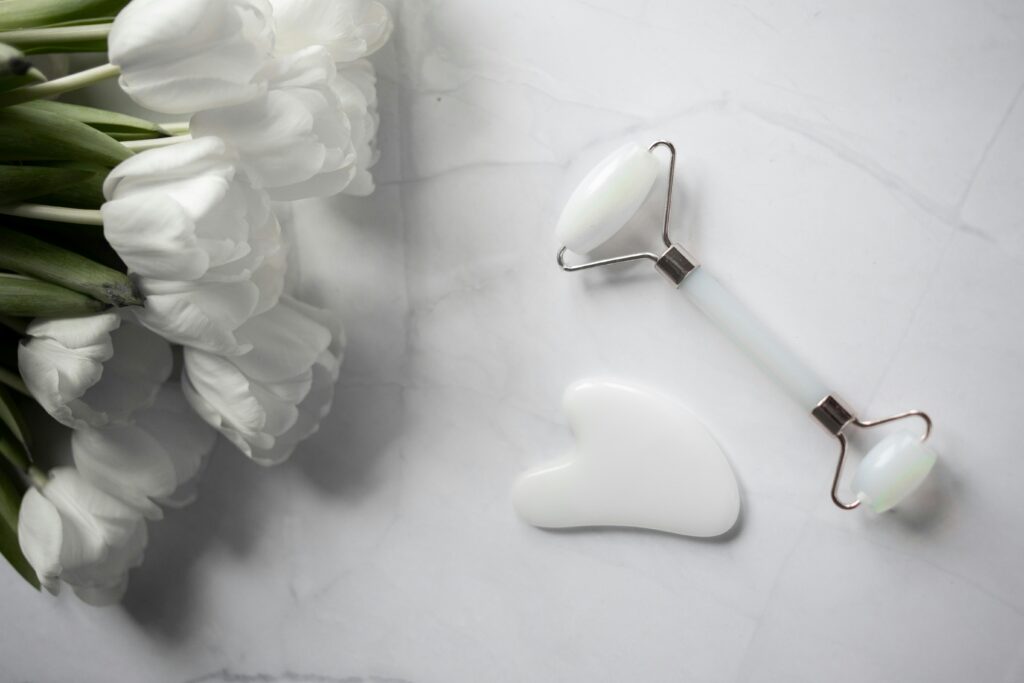
Benefits of Gua Sha:
- Stimulates Lymphatic Flow: The scraping motion helps move stagnant lymph fluid, promoting better circulation.
- Reduces Swelling: Gua sha can help reduce puffiness and inflammation by encouraging lymphatic drainage.
- Detoxifies: By promoting lymphatic flow, gua sha aids the removal of toxins and waste from the body.
- Improves Skin Health: Regular use can enhance skin texture and reduce the appearance of fine lines and wrinkles.
Technique: Use a gua sha tool to gently scrape the skin in upward and outward strokes, focusing on areas with lymph nodes such as the neck and face.
Ideal For: Those looking for a natural, manual method to enhance lymphatic drainage and improve skin health.
Dry Brushing
Dry brushing involves using a natural bristle brush to massage the skin in circular motions.
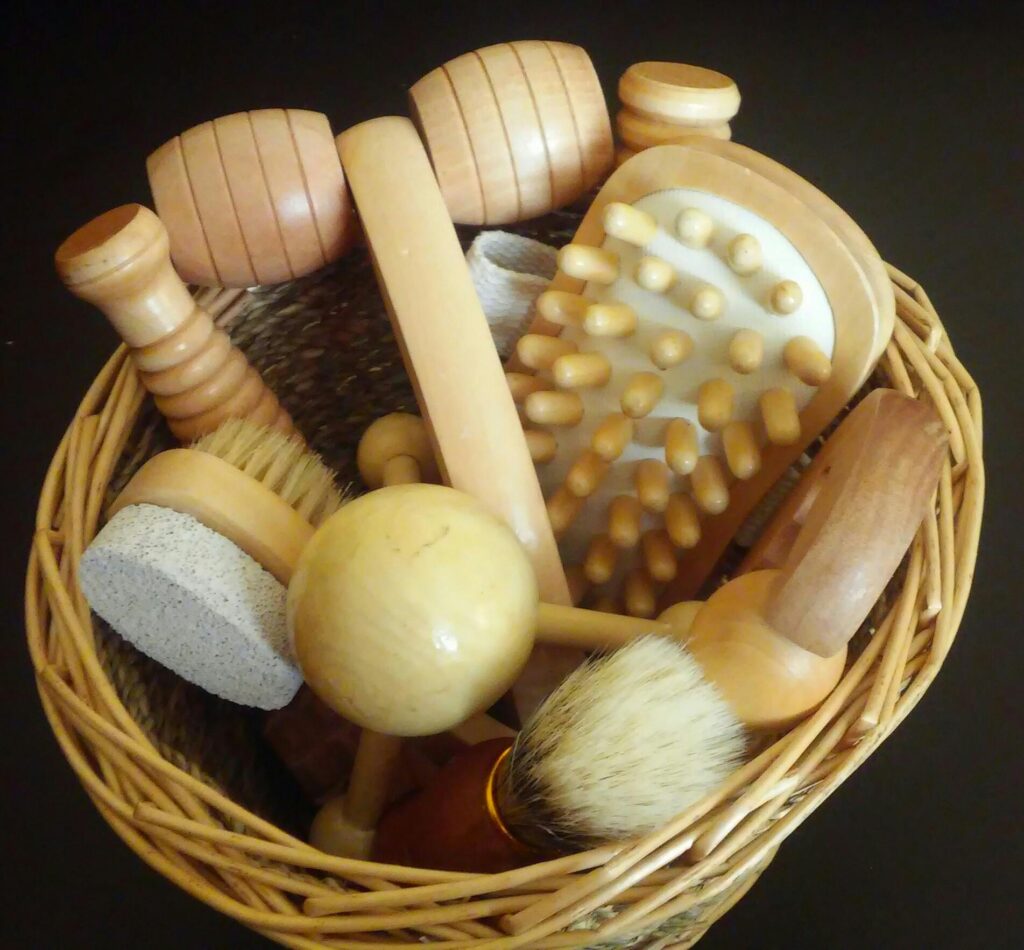
Benefits of Dry Brushing:
- Enhances Lymphatic Flow: brushing motion stimulates the lymphatic system, promoting better fluid movement.
- Exfoliates Skin: Dry brushing removes dead skin cells, improving skin texture and clarity.
- Boosts Circulation: Increases blood flow to the skin, contributing to a healthy glow.
- Reduces Cellulite: Regular brushing can help reduce the appearance of cellulite by breaking down fat deposits and promoting fluid drainage.
- Great for any age! Dry brushing can be safe for various ages when performed carefully and with consideration for individual skin sensitivity and health conditions. It’s advisable to start gently, monitor skin reactions, and adjust the technique as needed to ensure a comfortable and beneficial experience.
Technique: Use a dry brush to gently massage the skin in circular motions, starting from the feet and moving upwards towards the heart.
Ideal For: Those who prefer a simple, at-home method to support lymphatic health and improve skin appearance.
Jumping on a Trampoline
Jumping on a trampoline provides several benefits, including improved cardiovascular fitness, enhanced muscle strength and tone, better coordination and balance, increased lymphatic circulation, and a fun way to engage in physical activity.

Benefits of jumping:
- Boosts Lymphatic Circulation: The up-and-down motion of jumping encourages lymph fluid movement, enhancing detoxification.
- Improves Immune Function: Regular rebounding strengthens the immune system by promoting efficient lymphatic drainage.
- Supports Cardiovascular Health: A good cardiovascular workout improves overall heart health.
- Enhances Muscle Tone: Strengthens and tones muscles, contributing to overall fitness.
Technique: Spend 10-20 minutes daily bouncing gently on a mini trampoline to stimulate lymphatic flow.
Ideal For: Individuals; looking for fun and effective exercise to boost lymphatic health and overall fitness.
Massages
Massage therapy offers numerous benefits including relieving muscle tension and pain, improving circulation and flexibility, aiding in faster recovery from injuries, boosting immune function, reducing stress, enhancing sleep quality and mental clarity, alleviating symptoms of anxiety and depression, improving mood, and strengthening the mind-body connection, contributing to overall well-being.
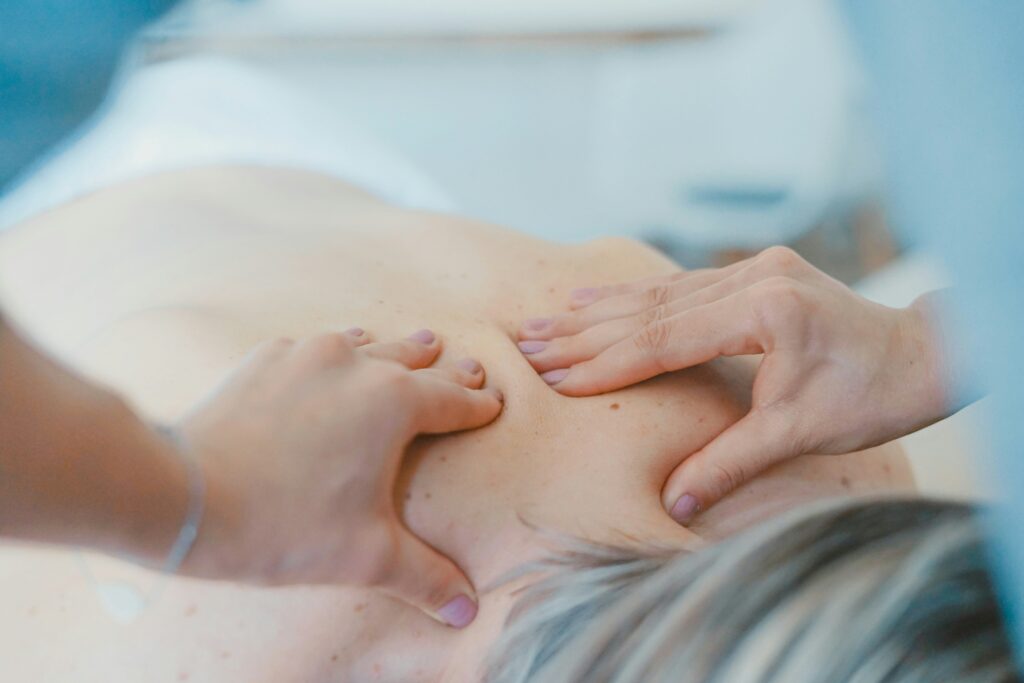
- Promotes Lymphatic Flow: The gentle massage techniques help move lymph fluid, reducing swelling and inflammation.
- Reduces Toxins: Facilitates the removal of toxins and waste from the body, supporting detoxification.
- Relieves Pain and Tension: Can alleviate chronic pain and muscle tension, improving overall comfort.
- Enhances Relaxation: Provides a calming and relaxing experience, reducing stress levels.
Ideal For: Those seeking a professional, therapeutic approach to improve lymphatic health and reduce pain and tension.
Conclusion
Each technique—gua sha, dry brushing, jumping on a trampoline, and massages—offers unique benefits for lymphatic drainage. Whether you prefer a natural manual method like gua sha and dry brushing, a fun exercise like rebounding, or a professional therapeutic approach like massages, incorporating these practices into your routine can significantly enhance your lymphatic health.
For more information: Click Here!

